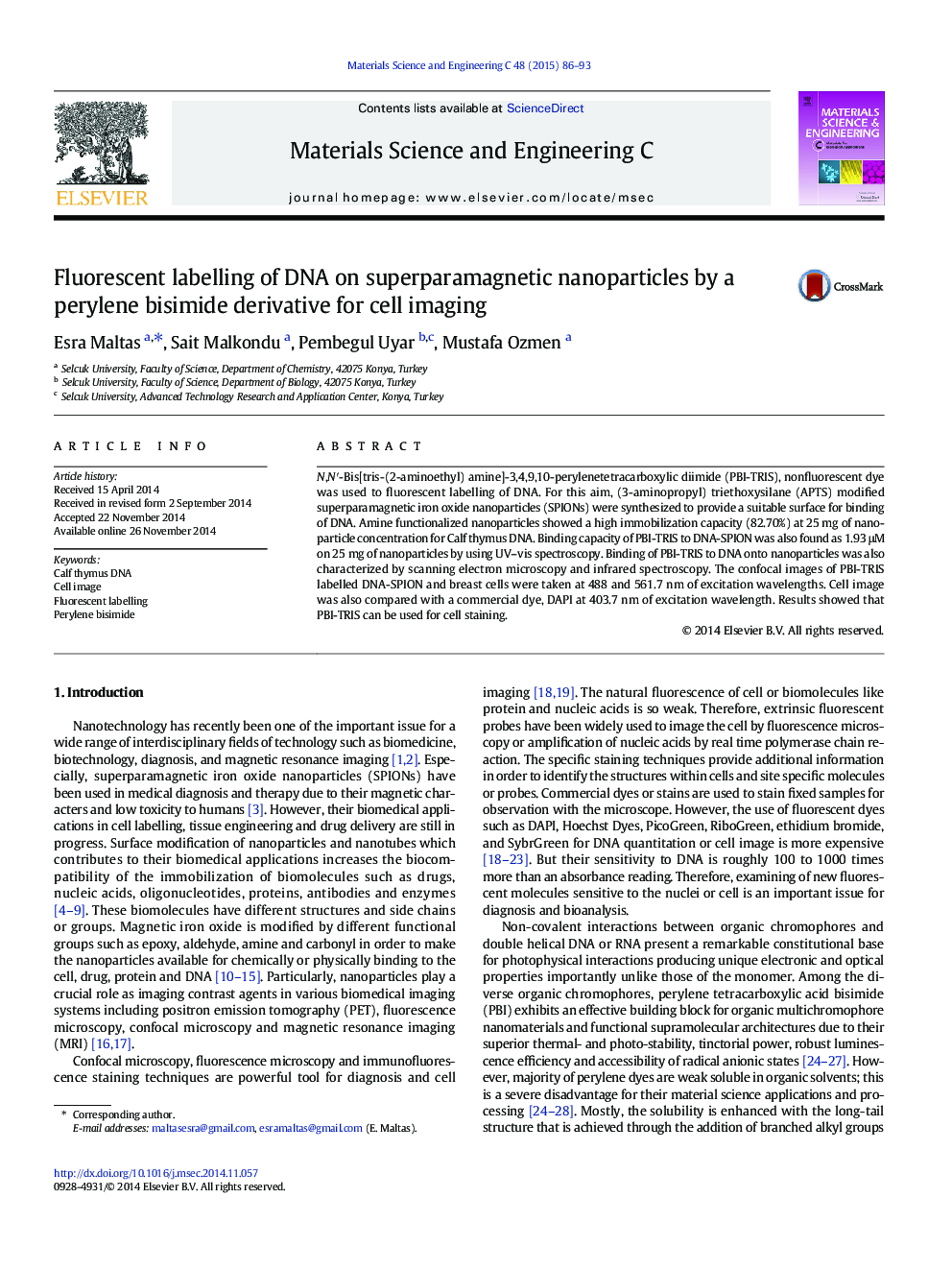| Article ID | Journal | Published Year | Pages | File Type |
|---|---|---|---|---|
| 1428436 | Materials Science and Engineering: C | 2015 | 8 Pages |
•Functionalized SPIONs were synthesized and treated with DNA.•The binding of PBI-TRIS with DNA was studied.•The image of PBI-TRIS labelled DNA-SPION was detected by a confocal microscope.
N,N′-Bis[tris-(2-aminoethyl) amine]-3,4,9,10-perylenetetracarboxylic diimide (PBI-TRIS), nonfluorescent dye was used to fluorescent labelling of DNA. For this aim, (3-aminopropyl) triethoxysilane (APTS) modified superparamagnetic iron oxide nanoparticles (SPIONs) were synthesized to provide a suitable surface for binding of DNA. Amine functionalized nanoparticles showed a high immobilization capacity (82.70%) at 25 mg of nanoparticle concentration for Calf thymus DNA. Binding capacity of PBI-TRIS to DNA-SPION was also found as 1.93 μM on 25 mg of nanoparticles by using UV–vis spectroscopy. Binding of PBI-TRIS to DNA onto nanoparticles was also characterized by scanning electron microscopy and infrared spectroscopy. The confocal images of PBI-TRIS labelled DNA-SPION and breast cells were taken at 488 and 561.7 nm of excitation wavelengths. Cell image was also compared with a commercial dye, DAPI at 403.7 nm of excitation wavelength. Results showed that PBI-TRIS can be used for cell staining.
Graphical abstractFigure optionsDownload full-size imageDownload as PowerPoint slide
